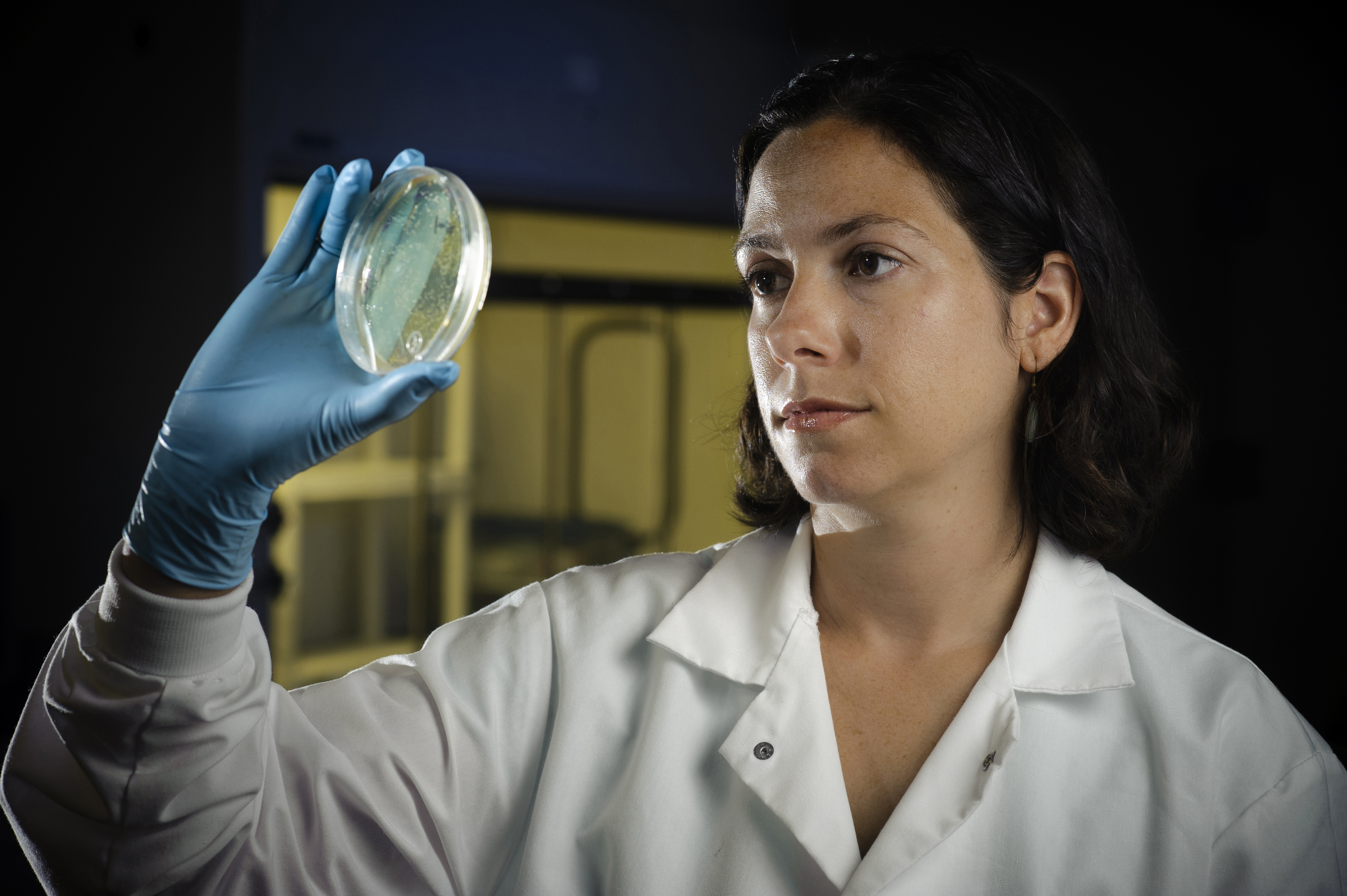Virginia Tech engineer identifies pollution as a new concern for antibiotic resistance

When an antibiotic is consumed, researchers have learned that up to 90 percent passes through a body without metabolizing. This means the drugs can leave the body almost intact through normal bodily functions.
In the case of agricultural areas, excreted antibiotics can then enter stream and river environments through a variety of ways, including discharges from animal feeding operations, fish hatcheries, and nonpoint sources such as the flow from fields where manure or biosolids have been applied. Water filtered through wastewater treatment plants may also contain used antibiotics.
Consequently, these discharges become “potential sources of antibiotic resistance genes,” says Amy Pruden, a National Science Foundation (NSF) Faculty Early Career Development (CAREER) award recipient, and an assistant professor of civil and environmental engineering at Virginia Tech.
“The presence of antibiotics, even at sub-inhibitory concentrations, can stimulate bacterial metabolism and thus contribute to the selection and maintenance of antibiotic resistance genes,” Pruden explains. “Once they are present in rivers, antibiotic resistance genes are capable of being transferred among bacteria, including pathogens, through horizontal gene transfer.”
The World Health Organization and the Center for Disease Control recognize antibiotic resistance “as a critical health challenge of our time,” Pruden writes in a paper published in a 2010 issue of Environmental Science and Technology.
Pruden says reducing the spread of antibiotic resistance is a critical measure needed to prolong the effectiveness of currently available antibiotics. This is important since “new drug discovery can no longer keep pace with emerging antibiotic-resistant infections,” Pruden says.
Pruden who has developed the concept of antibiotic resistance genes as environmental pollutants has an international reputation in applied microbial ecology, environmental remediation, and environmental reservoirs of antimicrobial resistance.
In her work outlined in the "Environmental Science and Technology" article, she and her co-authors, H. Storteboom, M. Arabi, and J.G. Davis, all of Colorado State University, and B. Crimi of Delft University in The Netherlands, identified specific patterns of antibiotic resistance gene occurrence in a Colorado watershed. Identification of these patterns represents a major step in being able to discriminate between agricultural and wastewater treatment plant sources of these genes in river environments.
They assert that such unique patterns of antibiotic resistance gene occurrence represent promising molecular signatures that may then be used as tracers of specific manmade sources.
In their study they identified three wastewater treatment plant sites, six animal feeding operation locations, and three additional locations along a pristine region of the Poudre River, in an upstream section located in the Rocky Mountains. They compared the frequency of detection of 11 sulfonamide and tetracycline antibiotic resistance genes.
Their findings showed detection of one particular antibiotic resistance gene in 100 percent of the treatment plant and animal feeding operations, but only once in the clean section of the Poudre River.
As they are able to differentiate between human and animal sources of the antibiotic resistance genes, Pruden and her colleagues believe they can “shed light on areas where intervention can be most effective in helping to reduce the spread of these contaminants through environmental matrixes such as soils, groundwater, surface water, and sediments.
“This study advances the recognition of antibiotic resistance genes as sources to impacted environments, taking an important step in the identification of the dominant processes of the spreading and transport of antibiotic resistance genes.”
The Colorado Water Resources Research Institute and a U.S. Department of Agriculture's Agricultural Experiment Station provided funding for this study in addition to Pruden’s NSF award.




